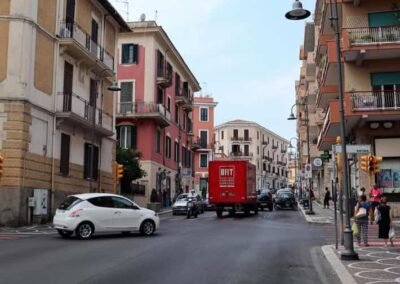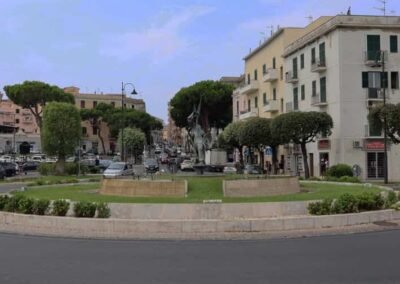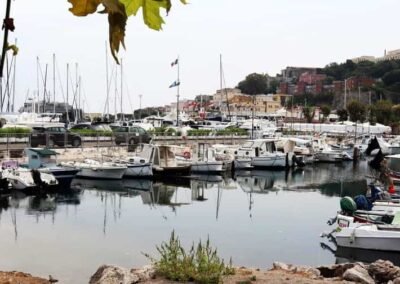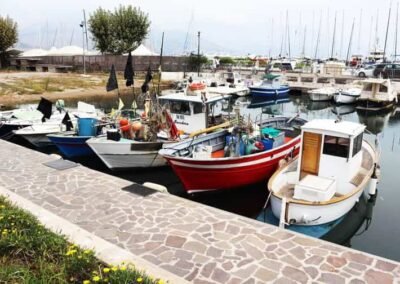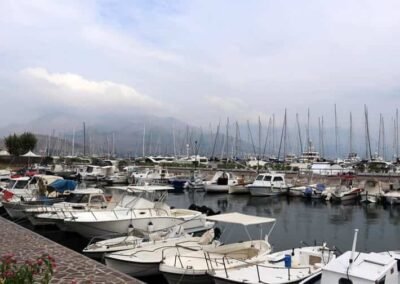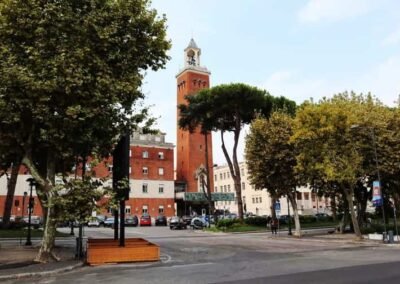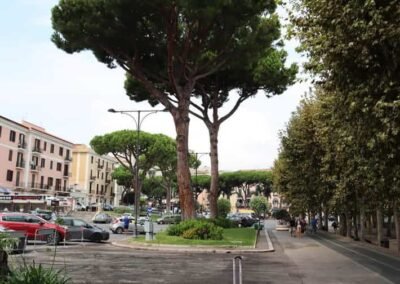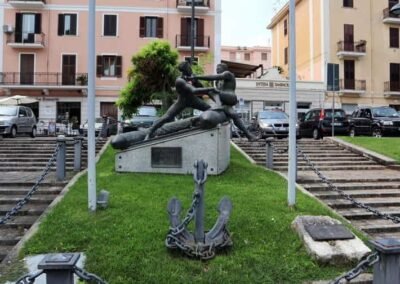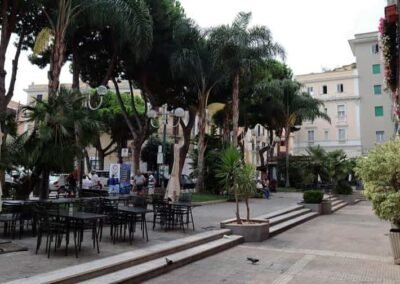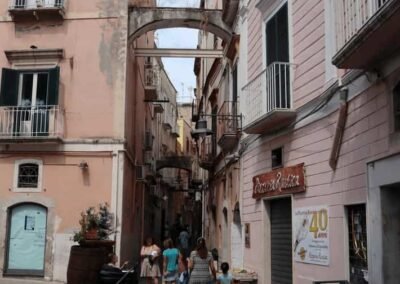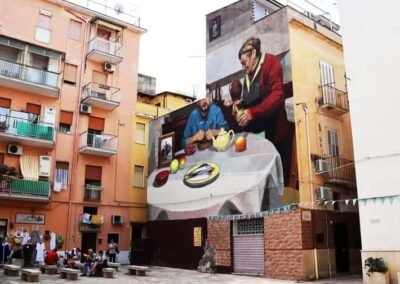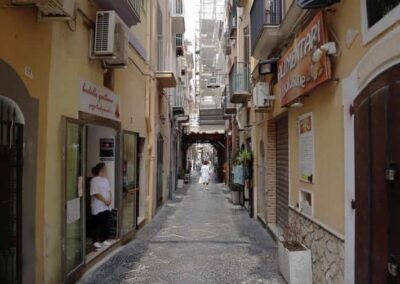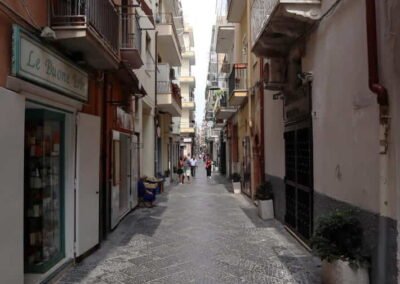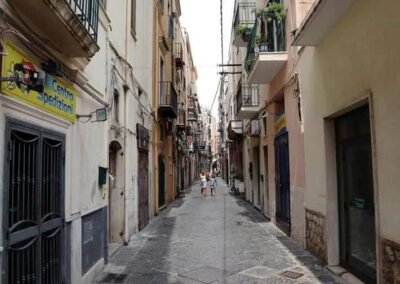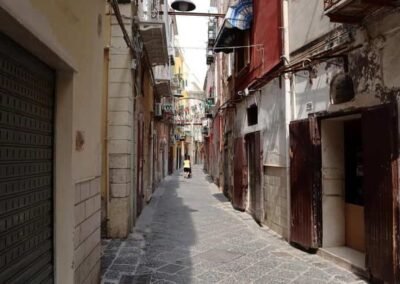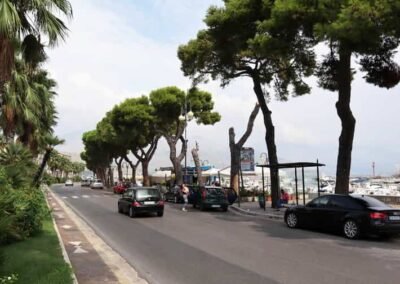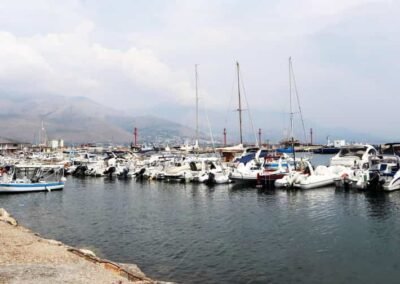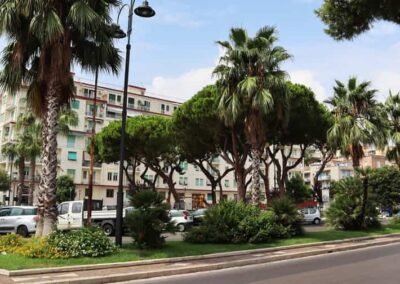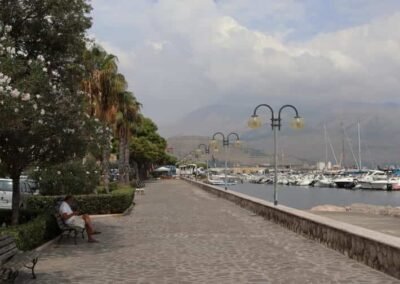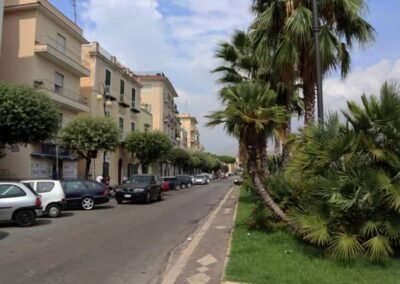HOME
THE REGIONS OF ITALY
PLACES IN ITALY
Italy in Photos
Corso Cavour, 04024 Gaeta, Italy (September 2019)
Gaeta
Gaeta, a picturesque coastal town in the Lazio region of central Italy, is a hidden gem rich in history, natural beauty, and cultural charm. Located on a promontory stretching into the Tyrrhenian Sea, about halfway between Rome and Naples, Gaeta offers visitors a blend of historical significance, stunning beaches, and vibrant local traditions. Its strategic location along the coast has made it an important port and fortress for centuries, and today, it remains a popular yet tranquil destination for those seeking an authentic Italian seaside experience. Gaeta’s history is deeply intertwined with the rise and fall of ancient civilizations. Its name is thought to derive from Caieta, the nurse of Aeneas in Roman mythology, who was said to have been buried in the area. The town was an important settlement during Roman times, serving as a summer retreat for the Roman elite. Evidence of its Roman past can still be seen in various ruins and artifacts, including the impressive mausoleum of Lucius Munatius Plancus, which overlooks the sea from Monte Orlando. During the Middle Ages, Gaeta grew in prominence as a maritime republic and an independent duchy, rivalling other powerful city-states such as Amalfi and Venice. Its strategic position on the coast made it a key military outpost, and its fortifications, some of which still stand today, were built to defend against invasions by the Byzantines, Normans, and Saracens. One of the most notable landmarks from this period is the Castello Angioino-Aragonese, a massive fortress that looms over the town and offers breath-taking views of the surrounding sea and landscape. In more recent history, Gaeta played a significant role in the unification of Italy. It was here that the last stand of the Bourbon Kingdom of the Two Sicilies took place in 1860-1861, when King Francis II retreated to the fortified city before surrendering to the forces of Giuseppe Garibaldi.
Gaeta is renowned for its natural beauty, with its dramatic cliffs, clear blue waters, and pristine beaches making it a sought-after destination for both relaxation and outdoor activities. The town is part of the Riviera di Ulisse (Ulysses’ Riviera), a stretch of coastline rich in mythological and historical associations. The beaches of Gaeta are among its top attractions, with Serapo Beach being the most popular. This long, sandy beach is ideal for swimming, sunbathing, and water sports, with the scenic Monte Orlando serving as a backdrop. For those seeking more secluded spots, Arenauta Beach and Spiaggia dei 300 Gradini (Beach of the 300 Steps) are beautiful, quieter alternatives nestled between cliffs and accessible by a scenic hike. Monte Orlando, a nature reserve that dominates the landscape, is a favourite for hikers and nature lovers. The park offers trails with stunning views of the Tyrrhenian Sea and the Gulf of Gaeta, as well as historical sites like the Sanctuary of the Holy Trinity and ancient Roman ruins. Gaeta is also steeped in cultural and religious traditions, with numerous churches and historical buildings that reflect its rich past. The Cathedral of St. Erasmus is a prominent religious site, boasting a Romanesque bell tower and housing relics of the town’s patron saints. Another must-see is the Montagna Spaccata (Split Mountain), a dramatic natural formation associated with a legend that it split at the moment of Christ’s death. Visitors can descend the steps to the “Grotta del Turco,” a sea cave carved into the mountain, which adds a sense of mystery and wonder to the experience. The town’s culinary traditions are deeply rooted in its maritime and agricultural heritage. Gaeta is famous for its olives, known as Olive di Gaeta, which are used in many local dishes and are prized throughout Italy. Seafood is a staple of the local diet, with fresh fish, octopus, and mussels often featured in traditional recipes. One of the town’s signature dishes is tiella, a savoury pie filled with ingredients like octopus, escarole, or anchovies, combining the flavours of the sea and the land. Gaeta offers visitors a perfect combination of historical exploration, natural beauty, and authentic Italian coastal life. Whether wandering through its ancient streets, lounging on its beautiful beaches, or savouring its renowned cuisine, Gaeta provides an unforgettable experience that captures the essence of Italy’s rich heritage and stunning landscapes. With its strategic location between Rome and Naples, it is an ideal destination for those looking to explore the lesser-known gems of the Italian coast.
Worth a Visit
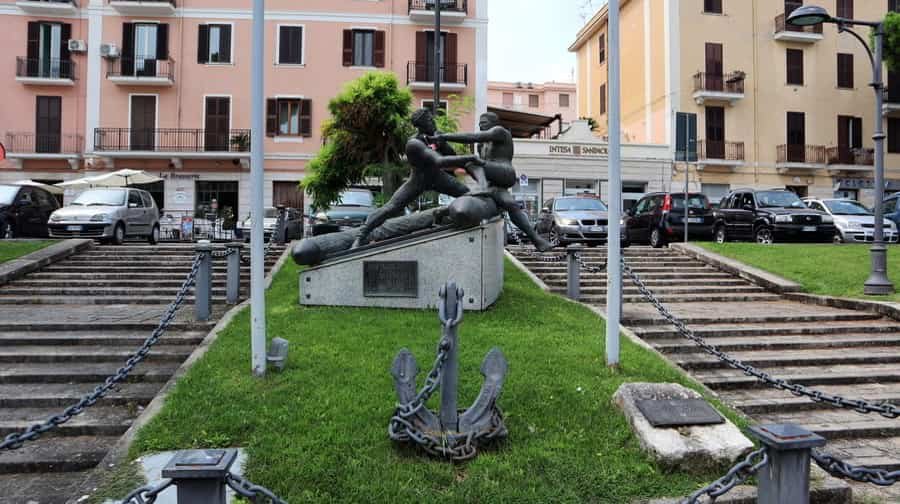
Piazza della Libertà is one of the most important and symbolic squares in Gaeta, a city that blends ancient history, maritime tradition, and modern life along the Tyrrhenian coast of Lazio. Overlooking the Gulf of Gaeta, this wide and elegant piazza serves as both a scenic terrace and a civic centre, offering breath-taking views while also hosting monuments that recall the city’s central role in Italian history. Its very name, “Liberty Square,” reflects values of independence, identity, and unity, concepts deeply tied to Gaeta’s legacy, especially during the struggles of the Risorgimento and the birth of modern Italy. The square is best known for its monumental structures that make it a landmark not only for the city but also for national memory. Among the most significant is the Monumento ai Caduti, dedicated to the fallen soldiers, which stands prominently in the piazza.
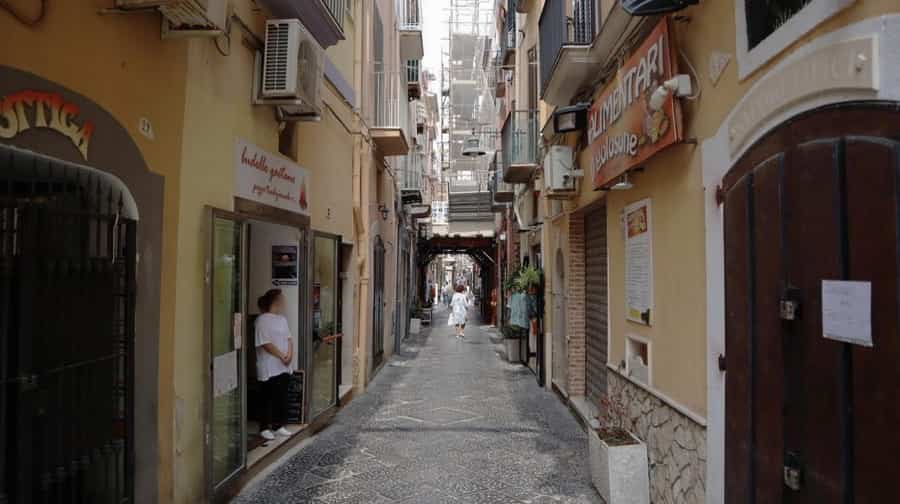
Via dell’Indipendenza is one of the most evocative and characteristic streets in Gaeta, a city renowned for its maritime traditions, layered history, and lively atmosphere along the Tyrrhenian Sea. Unlike the modern boulevards that connect the newer districts, this street offers a journey back in time, winding through the heart of Gaeta Vecchia, the old town. Its very name, “Street of Independence,” recalls the spirit of the 19th century Risorgimento and Gaeta’s pivotal role in the unification of Italy, when the city stood as the last stronghold of the Bourbon Kingdom of the Two Sicilies before falling in 1861. Thus, the street embodies both memory and daily life, blending the symbolic weight of independence with the charm of tradition. Via dell’Indipendenza stretches like a ribbon through the older part of Gaeta, characterized by narrow passageways, stone steps, and arches that open suddenly onto small squares or glimpses of the sea.
Photo Gallery of Walk – Corso Cavour to Via G. Buonomo
Approximately 1.95 km – 1.21 miles
The walk starts in Corso Cavour – Via Lungomare Giovanni Caboto – Piazza X IX Maggio – Piazza della Libertà – Via dell’Indipendenza – Via Lungomare Giovanni Caboto – Via G. Buonomo
COPYRIGHT © 2018-2025 ITALY IN PHOTOS - ALL RIGHTS RESERVED
